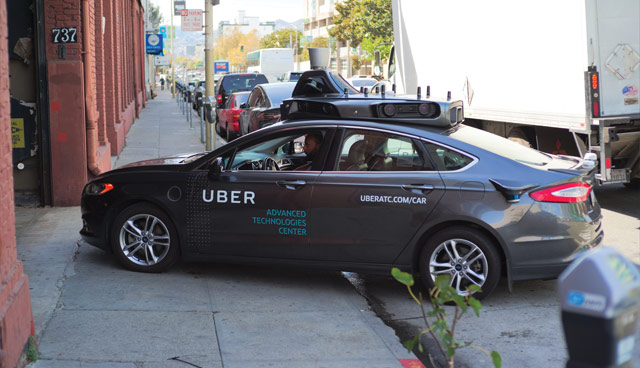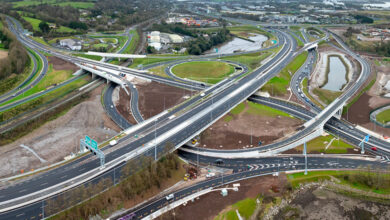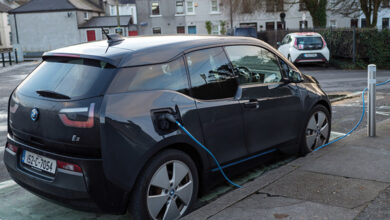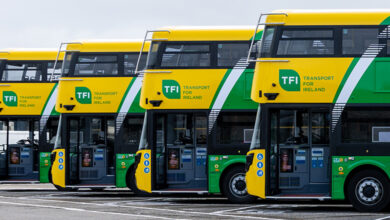Driverless cars: what needs to be considered?


There is currently much debate about the topic of autonomous vehicles, or ‘driverless cars’, with high levels of expectation and equally a large measure of scepticism. This article considers some aspects of the technology, including the Irish context. Edward Jones, Senior Lecturer in Electrical and Electronic Engineering at NUIG writes.
 A common source of confusion lies in the exact definition of ‘autonomous’ or ‘driverless’. Most people, when they think of autonomous vehicles, think in terms of a vehicle that does 100 per cent of the work, with the driver doing nothing and in effect becoming a mere ‘occupant’. However, there are many levels of autonomy, and while we are still some distance away from widespread deployment of fully driverless cars, limited forms of autonomy are already available. A scale ranging from Level Zero (fully manual) to Level Five (fully autonomous) has been defined by the Society of Automotive Engineers (SAE) to characterise the different levels of autonomy. Functions such as adaptive cruise control and lane keeping assist can be considered Level One or Two, and indeed are sometimes regarded as ‘driver assistance’ functions rather than autonomous functions. Levels Thee and Four are where the move from driver to vehicle becomes particularly apparent. For example, Level Three allows the car to operate autonomously in some conditions, where the car monitors the environment and the driver can direct their attention elsewhere; however, the driver must be in a position to take control immediately if the vehicle finds itself in a situation that it cannot manage by itself. Managing this transfer of control is challenging and requires not only that the car have knowledge of the current state of the driver, but also requires an appropriate human-machine interface to quickly bring the driver’s attention back to the driving task.
A common source of confusion lies in the exact definition of ‘autonomous’ or ‘driverless’. Most people, when they think of autonomous vehicles, think in terms of a vehicle that does 100 per cent of the work, with the driver doing nothing and in effect becoming a mere ‘occupant’. However, there are many levels of autonomy, and while we are still some distance away from widespread deployment of fully driverless cars, limited forms of autonomy are already available. A scale ranging from Level Zero (fully manual) to Level Five (fully autonomous) has been defined by the Society of Automotive Engineers (SAE) to characterise the different levels of autonomy. Functions such as adaptive cruise control and lane keeping assist can be considered Level One or Two, and indeed are sometimes regarded as ‘driver assistance’ functions rather than autonomous functions. Levels Thee and Four are where the move from driver to vehicle becomes particularly apparent. For example, Level Three allows the car to operate autonomously in some conditions, where the car monitors the environment and the driver can direct their attention elsewhere; however, the driver must be in a position to take control immediately if the vehicle finds itself in a situation that it cannot manage by itself. Managing this transfer of control is challenging and requires not only that the car have knowledge of the current state of the driver, but also requires an appropriate human-machine interface to quickly bring the driver’s attention back to the driving task.
A recent Behaviour and Attitudes survey on behalf of the Road Safety Authority attempted to capture public attitudes towards driverless cars in Ireland. One of the findings was that 40 per cent of respondents considered self-driving cars to be a ‘good idea’, though that figure rises to 54 per cent in under-25s. At the same time, 39 per cent of respondents would not trust a self-driving car to bring them to their destination. Overall, the survey results suggest that there is still some way to go in fostering acceptance in Ireland, though younger people seem to be more willing to accept this technology (as might be expected). For the purposes of this survey, a ‘driverless car’ is defined as a fully autonomous car – in essence, a Level Five vehicle. Low levels of automation on the SAE scale already exist, and it is likely that, rather than a ‘revolutionary’ move to Level Five, there will be ‘evolutionary’ development, with cars operating autonomously in increasingly complex environments (Levels Three and Four) and increasing levels of acceptance and trust over time.
Trust in the technology may also be influenced by concerns about the capabilities of the technology, and public perception is likely to be affected by events such as fatal accidents involving autonomous vehicles, including two involving Tesla vehicles (in 2016 and 2018) and one in March 2018 involving an Uber test vehicle. For example, in the case of the 2016 Tesla accident which already has been investigated in some detail, it appears that while the technology in the vehicle failed to react to the truck crossing the car’s path, the driver was also not paying attention, even though the technology requires the driver to remain attentive. Notwithstanding the rights or wrongs in any of these accidents, and the tragedy involved, they are useful to illustrate two important points: firstly, the technology is not perfect, but is getting better all the time; secondly, expectations around what the technology can do must be carefully managed, particularly in the middle of the SAE scale where control is shared between vehicle and driver.
Autonomous vehicle technology – particularly at higher levels of automation – relies heavily on Artificial Intelligence (AI) techniques. These systems generally learn through experience; by exposure to large amounts of data relating to different driving conditions, they ‘learn’ how to detect hazards and how to react appropriately. Put simply, they learn by experience in much the same way that human drivers learn through experience, and both are only as good as that learning. When human drivers encounter an unfamiliar situation, they usually try to ‘generalise’ what they know to the new conditions, but they often make mistakes. AI technology behaves in a similar way.
Availability of the technology is one thing; the necessary regulatory environment also needs to be in place to allow testing and deployment. Here, there may be something of a chicken and egg situation. On the one hand, as noted above, the technology’s performance depends on what it’s learned; on the other hand, in order to most effectively learn the ‘hard cases’ and so help to achieve better operation, testing must take place in real-world conditions where you have the usual every day mixture of traffic types, road and weather conditions, vulnerable road users etc. Most legislation stipulates that a human driver must always be in control of the vehicle in traffic, e.g. the 1968 Vienna Convention on Road Traffic which has been adopted by many countries, or other national legislation like the 1961 Road Traffic Act and its amendments in Ireland, so the legislative context is generally clear on who’s responsible.
In terms of regulating the use of autonomous vehicle technology, practice varies around the world. A large number of US states allow the use and testing of autonomous vehicle technology, with varying degrees of permissiveness, e.g. the requirement to have a backup safety driver in the vehicle is common, while California has introduced regulations permitting the use of cars cars on public roads with no driver in the vehicle. In Europe, a number of countries have already introduced regulations, including the UK, Sweden, Germany and the Netherlands; likewise in several Asian countries. While there is a need to conduct ‘real world’ deployment of this technology, a vital consideration must be the common good of maintaining public safety.
The use of fully driverless vehicles on public roads is not currently permitted in Ireland. While a vibrant ecosystem around development of autonomous vehicle technology is already present in this country, and there is a need to test and deploy this technology in the most effective way, it is understandable that authorities will want to proceed with caution in the interests of public safety. However, there is a great deal of experience already available from overseas, and within Irish industry and the public sector, about how regulation could be handled and this can be effectively leveraged in the development of appropriate regulation in this country sooner rather than later.
In summary, the introduction of autonomous vehicles in this country is not a question of if, but when, though it will likely be incremental rather than revolutionary. As the technology improves, public confidence, particularly among young people, is likely to increase, though the regulatory framework also needs to be developed in a timely fashion to foster development and deployment. Finally, as with any evolving technology, expectations need to be correctly managed about what the technology can and cannot do, and what responsibilities the driver retains.





